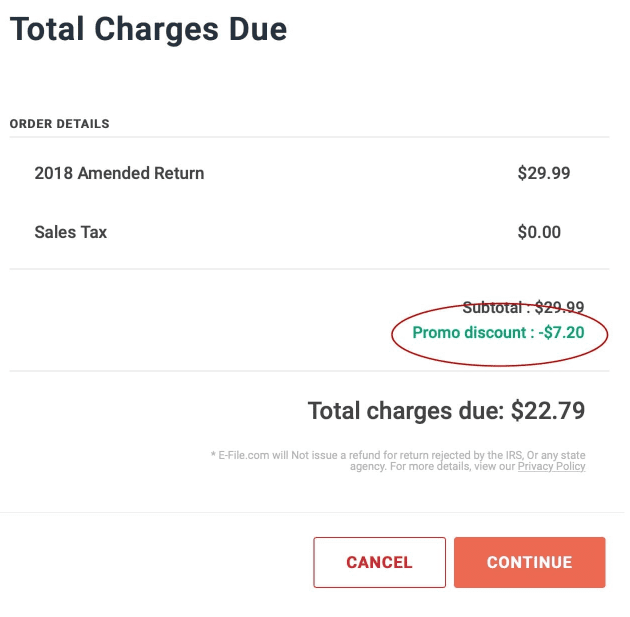How to Use a Coupon
The team at E-file.com works very hard to provide users with low prices on its software throughout the tax season. Despite our already low price, we also occasionally provide users with additional discounts. These discounts, whether they are supplied on our website or through a partnering website such as Groupon or Coupons.com, will come in the form of a coupon or promo code.
For example, right now, if you visit our home page you will see the coupon "25OFF" which provides all new users with 25% off their tax filing purchase. Please note, discounts only apply to tax software and not third party fees such as e-collect or other bank fees associated with paying for software with your tax refund.
Now, having a coupon code is great, but since it is only truly valuable if you know how and where to use it, we have created the following page to help show users how to use a coupon to receive a discount on their E-file.com software purchase.
Follow these three easy steps to apply a discount to your purchase.
Step 1: Once you reach the checkout page, you will see the total cost for the tax software including any state and/or federal filings. Underneath this, will be a link which says "Already have a promo code?" click this link and a entry field will appear.

Step 2: In this field enter your coupon code. Make sure not to add any additional spaces or characters or it will not be accepted. Once this is entered click the "Apply" button.

Step 3: Make sure the correct discount is now applied to your purchase.

If you have any trouble with these directions you can contact us outlining the issue you are having here.
